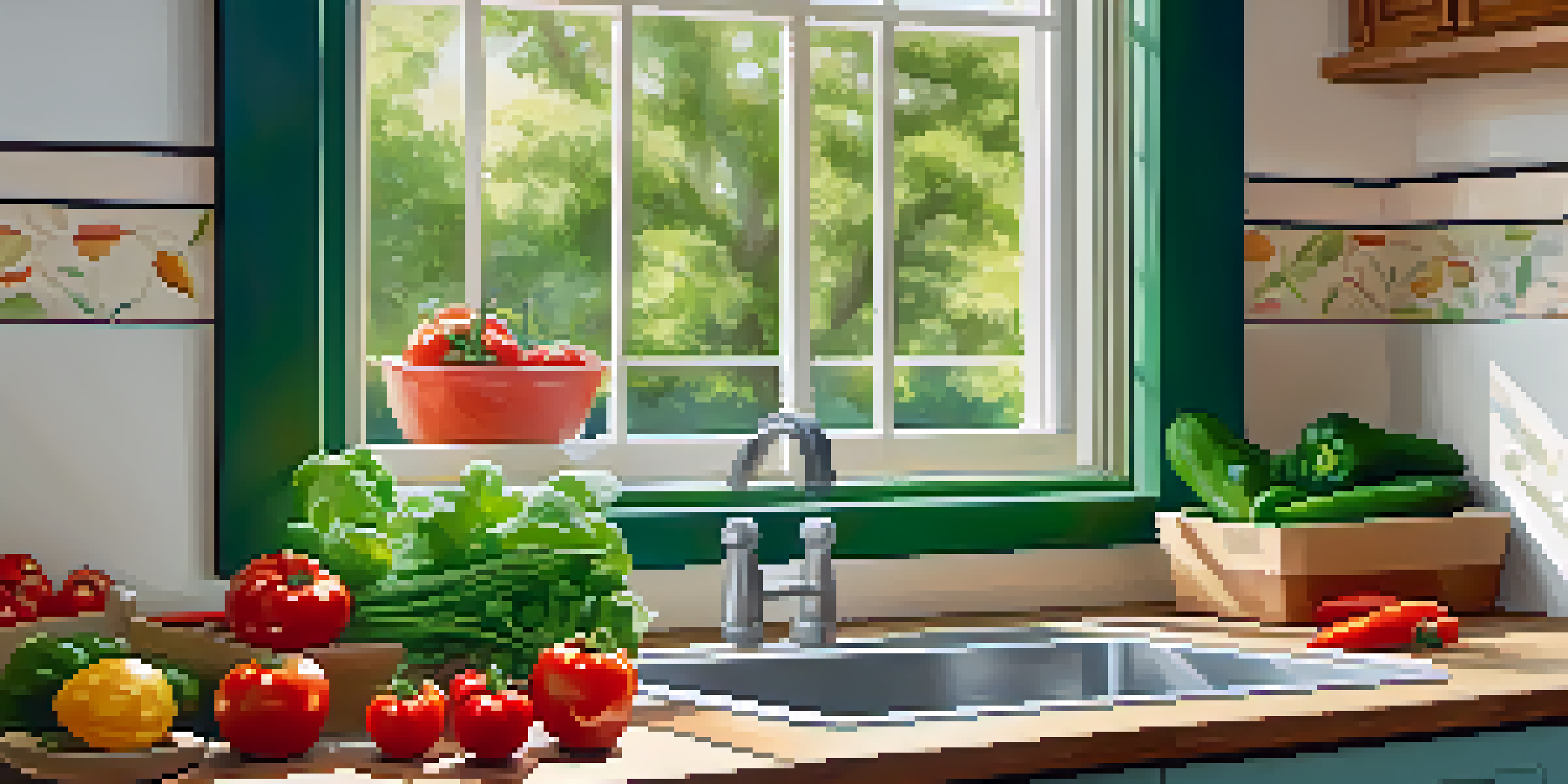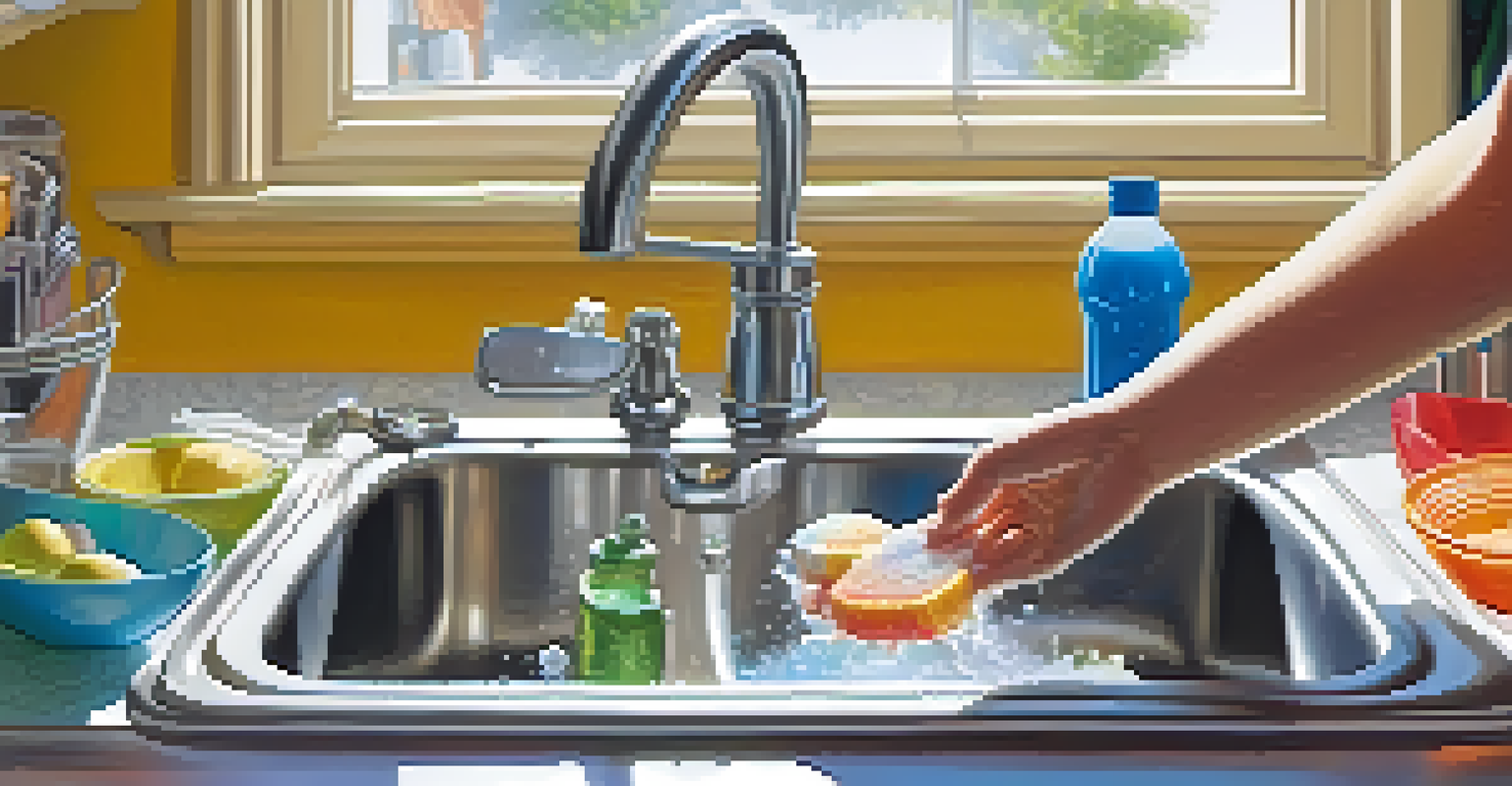The Role of Hygiene in Raw Food Safety Practices

The Importance of Hygiene in Raw Food Safety
Hygiene plays a pivotal role in ensuring the safety of raw food. By maintaining cleanliness, we can significantly reduce the risk of foodborne illnesses. This is particularly vital for raw foods, which are often consumed without cooking, a process that typically kills harmful bacteria.
Hygiene is two-thirds of health.
When we think of hygiene, it encompasses everything from personal cleanliness to the sanitation of food preparation areas. Proper handwashing, for instance, is essential before handling any food. This simple act can prevent the transfer of germs that may lead to serious health issues.
Additionally, hygiene extends to the storage and handling of raw ingredients. Keeping raw foods separate from cooked items and using clean utensils can thwart contamination. By prioritizing hygiene, we create a safer environment for enjoying raw foods.
Key Hygiene Practices for Raw Food Handling
Implementing specific hygiene practices is crucial when dealing with raw foods. First and foremost is washing hands thoroughly with soap and water before and after food preparation. This ensures that any bacteria or contaminants are removed, safeguarding the food from potential hazards.

Another important practice is ensuring that all surfaces and utensils are clean. Regularly sanitizing countertops and cutting boards helps eliminate any lingering bacteria. For example, using a mixture of water and vinegar can be an effective natural disinfectant.
Hygiene Prevents Foodborne Illnesses
Maintaining hygiene is crucial for reducing the risk of foodborne illnesses, especially with raw foods that are consumed without cooking.
Lastly, wearing clean clothing and avoiding jewelry during food preparation can help minimize contamination. These small steps can make a big difference in maintaining a hygienic workspace and ensuring that raw foods are safe to consume.
The Role of Cross-Contamination in Food Safety
Cross-contamination is one of the biggest threats to food safety, especially when it comes to raw foods. This occurs when harmful bacteria from one food item transfer to another, often through hands, utensils, or surfaces. Understanding how this happens is vital to preventing foodborne illnesses.
An ounce of prevention is worth a pound of cure.
To illustrate, consider preparing a salad with raw vegetables while also handling raw meat. If the same cutting board is used without proper cleaning in between, the bacteria from the meat can contaminate the vegetables. This is why it's essential to use separate equipment for raw and cooked foods.
By being mindful of cross-contamination risks, we can take proactive steps to keep our food safe. Simple measures such as using color-coded cutting boards can help remind us to keep raw and cooked items apart, reducing the chances of contamination.
Proper Storage Techniques for Raw Foods
Storage is another critical aspect of maintaining hygiene in raw food safety practices. Raw foods should always be stored at the correct temperatures to inhibit bacterial growth. For example, keeping fruits and vegetables in the refrigerator can help prolong their freshness and safety.
It's also important to store raw meats separately from other foods, ideally in sealed containers or on the bottom shelf of the fridge. This prevents any juices from dripping onto other items, further reducing the risk of cross-contamination.
Avoid Cross-Contamination Risks
Understanding and preventing cross-contamination is essential for food safety, requiring careful handling of raw and cooked foods.
Regularly checking expiration dates and discarding expired items is another essential practice. By being vigilant about what’s in our fridge, we can ensure that the raw foods we consume are not only fresh but also safe.
The Impact of Personal Hygiene on Food Safety
Personal hygiene is an often-overlooked aspect of food safety, but it plays a significant role in preventing foodborne illnesses. Clean hands are crucial when handling any food, especially raw items. If someone is unwell, they should avoid preparing food for others to prevent the spread of illness.
Wearing clean clothing and using hairnets or caps can further enhance hygiene practices in the kitchen. These measures help contain hair and skin flakes that can introduce bacteria to raw food products. Think of it like wearing a seatbelt; it’s a simple precaution that greatly enhances safety.
Additionally, keeping nails trimmed and clean is part of good personal hygiene. This minimizes the chances of any bacteria hiding under nails transferring to the food. By prioritizing personal cleanliness, we contribute significantly to overall food safety.
Educating Others on Raw Food Hygiene Practices
Education is key when it comes to promoting hygiene in raw food safety practices. Sharing knowledge about the importance of hygiene can help create a more food-safe environment for everyone. Whether it's hosting a cooking class or sharing tips online, every bit of education counts.
For example, teaching friends and family the importance of washing hands before food prep can have a ripple effect. When more people understand hygiene practices, they are more likely to adopt them in their own kitchens, fostering a culture of food safety.
Education Enhances Food Safety Awareness
Educating others about proper hygiene practices fosters a culture of food safety, empowering individuals to maintain safe handling of raw foods.
Moreover, providing clear guidelines on food handling and storage can empower individuals to take charge of their food safety. This shared responsibility can lead to safer food consumption practices within communities.
The Future of Raw Food Safety Practices
As the popularity of raw foods continues to rise, the focus on hygiene practices is becoming increasingly important. Innovations in food safety technology are emerging, offering solutions to enhance hygiene measures. For instance, new sanitizing sprays and UV light technology can help reduce bacteria on surfaces.
Additionally, there is a growing trend towards transparency in food sourcing. Consumers are becoming more aware of where their food comes from, which emphasizes the need for safe handling practices from farm to table. This awareness can drive better hygiene practices across the food industry.

Ultimately, the future of raw food safety lies in continuous education and innovation. By staying informed about best practices and embracing new technologies, we can ensure that raw foods are enjoyed safely and responsibly.